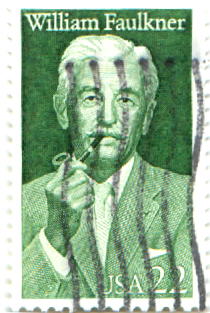FRtR > Outlines > American Literature > Modernism and Experimentation > 1914-1945: Modernism
An Outline of American Literature
by Kathryn VanSpanckeren
Modernism and Experimentation: 1914-1945: Modernism
*** Index * < Previous Chapter * Next Chapter > ***
The large cultural wave of Modernism, which gradually emerged in
Europe and the United States in the early years of the 20th
century, expressed a sense of modern life through art as a sharp
break from the past, as well as from Western civilization's
classical traditions. Modern life seemed radically different from
traditional life -- more scientific, faster, more technological,
and more mechanized. Modernism embraced these changes.
In literature, Gertrude Stein (1874-1946) developed an analogue
to modern art. A resident of Paris and an art collector (she and
her brother Leo purchased works of the artists Paul Cézanne,
Paul
Gauguin, Pierre Auguste Renoir, Pablo Picasso, and many others),
Stein once explained that she and Picasso were doing the same
thing, he in art and she in writing. Using simple, concrete words
as counters, she developed an abstract, experimental prose
poetry. The childlike quality of Stein's simple vocabulary
recalls the bright, primary colors of modern art, while her
repetitions echo the repeated shapes of abstract visual
compositions. By dislocating grammar and punctuation, she
achieved new "abstract" meanings as in her influential collection
Tender Buttons (1914), which views objects from different
angles,
as in a cubist painting:
A Table A Table means does it not my
dear it means a whole steadiness.
Is it likely that a change. A table
means more than a glass even a
looking glass is tall.
Meaning, in Stein's work, was often subordinated to technique,
just as subject was less important than shape in abstract visual
art. Subject and technique became inseparable in both the visual
and literary art of the period. The idea of form as the
equivalent of content, a cornerstone of post-World War II art and
literature, crystallized in this period.
Technological innovation in the world of factories and machines
inspired new attentiveness to technique in the arts. To take one
example: Light, particularly electrical light, fascinated modern
artists and writers. Posters and advertisements of the period are
full of images of floodlit skyscrapers and light rays shooting
out from automobile headlights, moviehouses, and watchtowers to
illumine a forbidding outer darkness suggesting ignorance and
old-fashioned tradition.
Photography began to assume the status of a fine art allied with
the latest scientific developments. The photographer Alfred
Stieglitz opened a salon in New York City, and by 1908 he was
showing the latest European works, including pieces by Picasso
and other European friends of Gertrude Stein. Stieglitz's salon
influenced numerous writers and artists, including William Carlos
Williams, who was one of the most influential American poets of
the 20th century. Williams cultivated a photographic clarity of
image; his aesthetic dictum was "no ideas but in things."
Vision and viewpoint became an essential aspect of the modernist
novel as well. No longer was it sufficient to write a
straightforward third-person narrative or (worse yet) use a
pointlessly intrusive narrator. The way the story was told became
as important as the story itself.
 Henry James, William Faulkner, and many other American writers
experimented with fictional points of view (some are still doing
so). James often restricted the information in the novel to what
a single character would have known. Faulkner's novel The
Sound
and the Fury (1929) breaks up the narrative into four
sections,
each giving the viewpoint of a different character (including a
mentally retarded boy).
Henry James, William Faulkner, and many other American writers
experimented with fictional points of view (some are still doing
so). James often restricted the information in the novel to what
a single character would have known. Faulkner's novel The
Sound
and the Fury (1929) breaks up the narrative into four
sections,
each giving the viewpoint of a different character (including a
mentally retarded boy).
To analyze such modernist novels and poetry, a school of "new
criticism" arose in the United States, with a new critical
vocabulary. New critics hunted the "epiphany" (moment in which a
character suddenly sees the transcendent truth of a situation, a
term derived from a holy saint's appearance to mortals); they
"examined" and "clarified" a work, hoping to "shed light" upon it
through their "insights."
*** Index * < Previous Chapter * Next Chapter > ***
 Henry James, William Faulkner, and many other American writers
experimented with fictional points of view (some are still doing
so). James often restricted the information in the novel to what
a single character would have known. Faulkner's novel The
Sound
and the Fury (1929) breaks up the narrative into four
sections,
each giving the viewpoint of a different character (including a
mentally retarded boy).
Henry James, William Faulkner, and many other American writers
experimented with fictional points of view (some are still doing
so). James often restricted the information in the novel to what
a single character would have known. Faulkner's novel The
Sound
and the Fury (1929) breaks up the narrative into four
sections,
each giving the viewpoint of a different character (including a
mentally retarded boy).